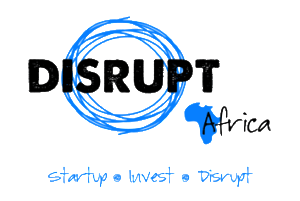Ripple’s XRP remains one of the most closely watched assets in crypto, particularly due to its institutional focus and regulatory trajectory. Most 2025 price prediction models reflect this maturity, projecting incremental gains driven by adoption in cross-border settlements and compliance milestones. However, for retail investors looking to replicate the kind of exponential growth seen in Bitcoin’s early years, XRP’s current market cap and token distribution present limitations.
This has prompted some analysts to explore alternative models — applying the structural assumptions used in early XRP forecasts to emerging assets. One such asset is Bitcoin Solaris, a fixed-supply, mobile-mining protocol now in its presale phase. When XRP’s earlier valuation models are recalibrated for BTC-S’s capped supply and low market entry, the resulting projections suggest an upside potential more closely resembling Bitcoin in 2013 than XRP in 2025.
Bitcoin Solaris Structure Resembles Early Bitcoin More Than XRP
While XRP was designed for institutional utility, Bitcoin Solaris is built for direct retail participation. At its core is a fixed supply of 21 million BTC-S tokens — distribution occurs through user activity, not centralized control. This aligns more with Bitcoin’s original reward system than Ripple’s allocation model.

The upcoming Nova App will allow users to mine BTC-S by contributing 1–5 GB of smartphone storage and background CPU. Mining rewards are issued automatically based on uptime, with no validator setup, no staking mechanism, and no exchange requirement. It’s a system built for participation — not passive speculation.
Dual-Layer Blockchain Supports High-Speed Execution
Bitcoin Solaris operates on a dual-layer blockchain. The base layer uses Proof-of-Stake (PoS) and Proof-of-Capacity (PoC) to secure the ledger with minimal energy use. The Solaris Layer handles mining and smart contract logic using Proof-of-History (PoH) and Proof-of-Time (PoT), enabling over 10,000 TPS and two-second transaction finality.
This design allows the protocol to distribute rewards to thousands of mobile users simultaneously, without relying on centralized infrastructure. It creates a foundation for user-driven earnings — something missing in most high-cap protocols, including XRP.
Third-Party Audits Confirm Security
Bitcoin Solaris has completed full third-party validation of its infrastructure. The Cyberscope audit confirmed smart contract logic and emission schedules. The Freshcoins audit validated mobile mining structure and system scalability. Full KYC verification has also been completed to confirm team legitimacy and operational transparency.

These checks ensure that rewards are distributed according to immutable protocol rules, not discretionary changes or custodial interference.
Fixed Entry and First-Mover Access
Bitcoin Solaris is currently in Presale Phase 4, with BTC-S priced at 4 USDT. Of the total 21 million token supply, 4.2 million BTC-S — 20% — are allocated for presale. There will be no additional token creation beyond what is defined by protocol logic.
Unlike XRP, which entered the market with billions of tokens pre-mined and distributed across institutions, BTC-S is still in its early-stage distribution cycle. This phase gives users access to both discounted tokens and an early position ahead of public mining activity via the Nova App. It is, structurally, the closest stage to Bitcoin’s early CPU mining era — where retail users gained exposure before institutional involvement and market saturation.
In a recent breakdown, Crypto Nitro outlines why Bitcoin Solaris offers more upside for retail users than XRP. He explains how fixed supply, user mining, and transparent tokenomics recreate the kind of entry conditions seen in Bitcoin’s 2013 cycle. The video walks through Nova App mechanics and presale positioning relative to protocol rollout.

XRP price predictions for 2025 reflect steady institutional growth — but not the kind of exponential upside many retail users are still searching for. Bitcoin Solaris offers a fundamentally different opportunity, grounded in early-stage distribution, capped supply, and protocol-level earning potential. Now in Presale Phase 4 at 4 USDT, it combines real infrastructure with user-first economics — conditions that more closely resemble Bitcoin’s formative years than any current top-tier asset.
Website: https://bitcoinsolaris.com/
X: https://x.com/BitcoinSolaris
Telegram: https://t.me/Bitcoinsolaris


